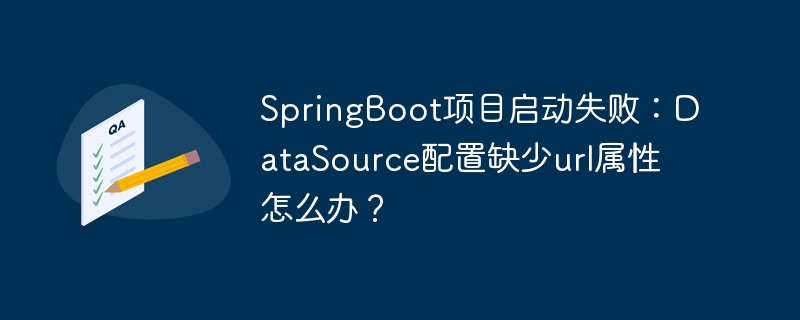
本文旨在为考虑将现有Java后端服务迁移至go语言的开发者提供一份全面的考量指南。特别是对于涉及从数据库读取命令、并行执行shell脚本并存储结果这类任务,Go语言展现出其独特的优势与挑战。
Go语言的成熟度与生态考量
在决定采用Go语言进行后端重构之前,首要考量是其语言本身的成熟度和稳定性。Go语言自诞生以来一直在快速发展,这意味着其语法、核心特性以及标准库包都在持续演进。对于开发者而言,这意味着需要保持对最新版本的关注,并准备好适应潜在的API变更或行为调整。这种活跃的开发周期既带来了快速迭代的优势,也可能对长期维护带来一定的挑战,要求团队具备持续学习和适应的能力。
内存管理与垃圾回收(GC)
Go语言内置了垃圾回收机制,旨在简化内存管理。然而,与c语言这类需要手动管理内存的语言相比,Go的垃圾回收器在某些极端性能场景下可能仍存在差距。虽然相较于Java应用中常见的内存占用(例如1.2GB),Go在内存效率上通常表现更优,但若追求极致的内存利用率,例如达到C语言级别的精细控制,Go的GC目前可能尚无法完全满足。因此,在内存敏感型应用中,需要仔细评估Go GC的当前性能是否符合项目需求。
数据库集成:以mysql为例
对于后端服务而言,数据库交互是核心功能之一。Go语言的核心库目前并未内置对MySQL或其他特定数据库的官方支持。这意味着开发者需要依赖社区贡献的第三方数据库驱动。例如,针对MySQL,目前存在多个非官方的驱动项目,如GoMySQL和Go-MySQL-Client-Library。在选择这些第三方库时,务必仔细评估其活跃度、社区支持、稳定性和完整性。建议查阅项目的gitHub仓库,了解其提交历史、issue解决情况以及是否有活跃的维护者,以确保所选驱动能够满足生产环境的需求。
Go在并发处理上的卓越能力
Go语言在并发编程方面具有天然的优势,这得益于其轻量级的协程(Goroutines)和通信机制(channels)。对于需要并行执行任务的场景,例如从数据库读取Shell命令、将其加入队列并同时执行,Go语言能够提供高效且简洁的解决方案。
立即学习“Java免费学习笔记(深入)”;
示例:并行执行Shell命令
假设我们有一个任务,需要从MySQL数据库中读取一系列Shell命令,然后并行执行它们并将输出保存回数据库。Go语言可以利用goroutine和exec包来高效完成这项工作。
- 读取命令: 使用选定的MySQL驱动从数据库中获取命令列表。
- 创建任务队列: 可以使用Go的channel作为任务队列,将读取到的命令发送到通道中。
- 并行执行: 启动多个goroutine作为工作者,它们从通道中接收命令,并使用os/exec包来执行这些命令。
- 捕获输出: exec.Cmd对象允许捕获标准输出和标准错误。
- 保存结果: 将执行结果(包括输出、错误码等)保存回数据库。
以下是一个简化的代码结构示例,展示如何使用exec包和goroutine:
package main import ( "context" "database/sql" "fmt" "log" "os/exec" "sync" "time" _ "github.com/go-sql-driver/mysql" // 假设使用此驱动 ) // Command represents a shell command to be executed type Command struct { ID int CmdText string } // Result represents the execution result type Result struct { CommandID int Output string Error string Success bool } // fetchCommandsFromDB simulates fetching commands from a database func fetchCommandsFromDB(db *sql.DB) ([]Command, error) { // In a real application, you'd query the database here // For demonstration, return some dummy commands return []Command{ {ID: 1, CmdText: "echo Hello from Go 1"}, {ID: 2, CmdText: "sleep 2 && echo Done sleep 2"}, {ID: 3, CmdText: "ls -l /nonexistent || echo File not found"}, {ID: 4, CmdText: "echo Hello from Go 4"}, }, nil } // saveResultToDB simulates saving results to a database func saveResultToDB(db *sql.DB, result Result) error { // In a real application, you'd insert/update the database here fmt.Printf("Saving result for Command ID %d: Success=%t, Output='%s', Error='%s'n", result.CommandID, result.Success, result.Output, result.Error) return nil } func worker(id int, commands <-chan Command, results chan<- Result, db *sql.DB) { for cmd := range commands { log.Printf("Worker %d: Executing command ID %d: '%s'", id, cmd.ID, cmd.CmdText) ctx, cancel := context.WithTimeout(context.Background(), 10*time.Second) // Set a timeout for the command defer cancel() command := exec.CommandContext(ctx, "bash", "-c", cmd.CmdText) // Use bash -c to execute complex commands output, err := command.CombinedOutput() // Capture both stdout and stderr result := Result{CommandID: cmd.ID} if err != nil { result.Success = false result.Error = err.Error() if ctx.Err() == context.DeadlineExceeded { result.Error += " (Timeout)" } } else { result.Success = true } result.Output = string(output) // Save result to DB (or send to another goroutine for batch saving) if err := saveResultToDB(db, result); err != nil { log.Printf("Worker %d: Failed to save result for Command ID %d: %v", id, cmd.ID, err) } results <- result // Send result back to main for potential further processing } } func main() { // db, err := sql.Open("mysql", "user:password@tcp(127.0.0.1:3306)/database") // if err != nil { // log.Fatalf("Failed to connect to database: %v", err) // } // defer db.Close() // For this example, db is nil as we are simulating DB operations var db *sql.DB = nil commands, err := fetchCommandsFromDB(db) if err != nil { log.Fatalf("Failed to fetch commands: %v", err) } numWorkers := 3 // Number of concurrent workers commandChan := make(chan Command, len(commands)) resultChan := make(chan Result, len(commands)) var wg sync.WaitGroup // Start workers for i := 1; i <= numWorkers; i++ { wg.Add(1) go func(workerID int) { defer wg.Done() worker(workerID, commandChan, resultChan, db) }(i) } // Send commands to the channel for _, cmd := range commands { commandChan <- cmd } close(commandChan) // Close the channel when all commands are sent // Wait for all workers to finish wg.Wait() close(resultChan) // Close the result channel when all workers are done // Process results (optional) fmt.Println("nAll commands processed. Final results:") for res := range resultChan { fmt.Printf("Command %d processed. Success: %tn", res.CommandID, res.Success) } }
注意事项:
- 错误处理: 在实际应用中,需要更完善的错误处理机制,包括数据库连接错误、命令执行错误等。
- 资源管理: 确保数据库连接池的正确配置和管理。
- 并发控制: 对于大量命令,可以考虑使用信号量(semaphore)或自定义的并发池来限制同时运行的goroutine数量,以避免资源耗尽。
- 命令安全性: 执行外部Shell命令存在安全风险。务必对来自数据库的命令进行严格的验证和清理,防止命令注入攻击。
总结与建议
Go语言在处理并行任务和构建高性能网络服务方面具有显著优势。其简洁的语法、高效的并发模型以及快速的编译速度,使其成为许多现代后端服务的理想选择。然而,对于从Java这类成熟生态系统迁移的开发者而言,需要充分认识到Go语言在某些方面(如语言稳定性、GC成熟度、第三方库生态)可能存在的差异和挑战。
对于文中描述的“从MySQL读取Shell命令,并行执行并保存输出”这类任务,Go语言无疑是非常适合的。goroutine和exec包的组合能够以非常高效且Go风格的方式实现需求。关键在于仔细评估并选择合适的第三方数据库驱动,并做好应对语言演进的准备。在做出最终决策前,建议进行小规模的原型开发,以验证Go语言是否能满足所有非功能性需求,并衡量团队的适应能力。

















